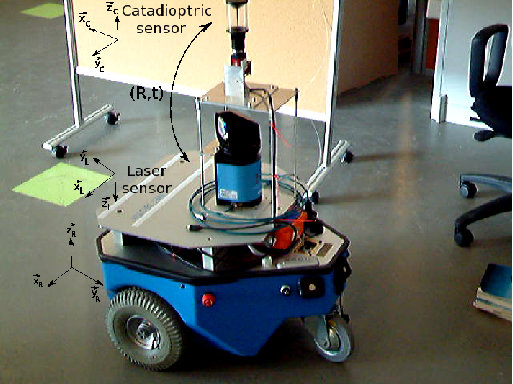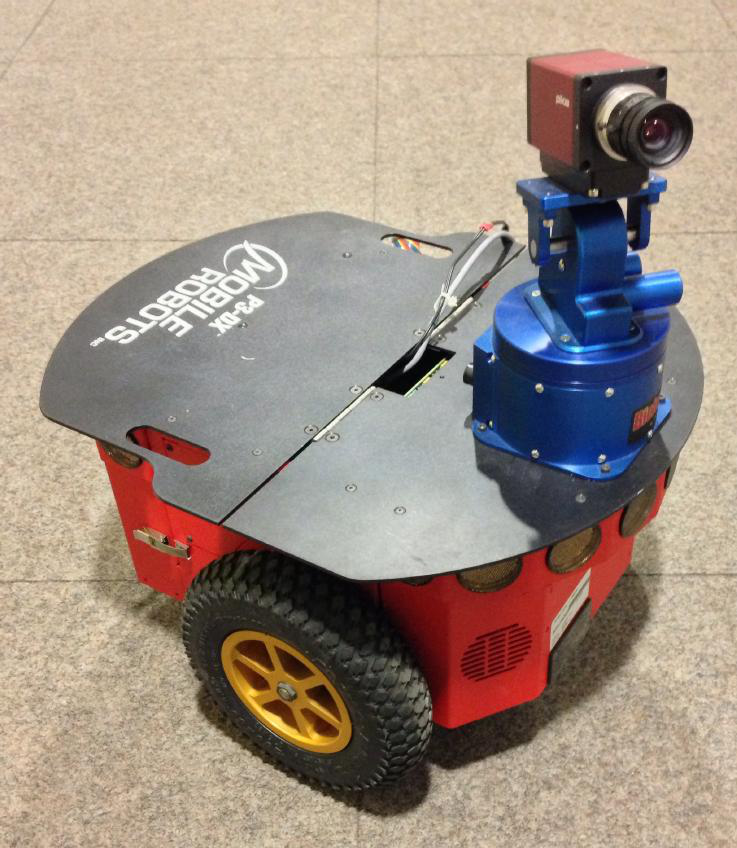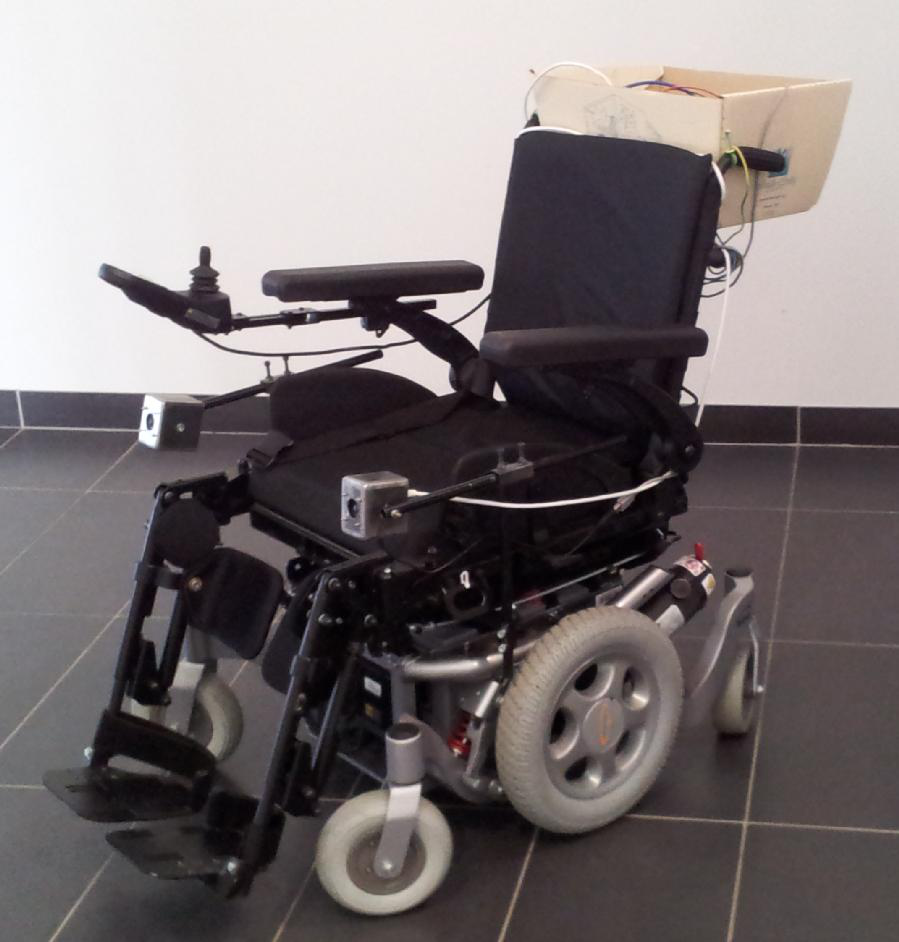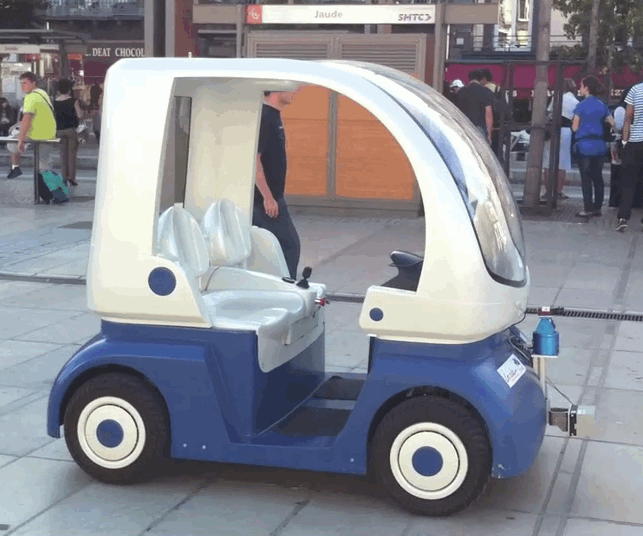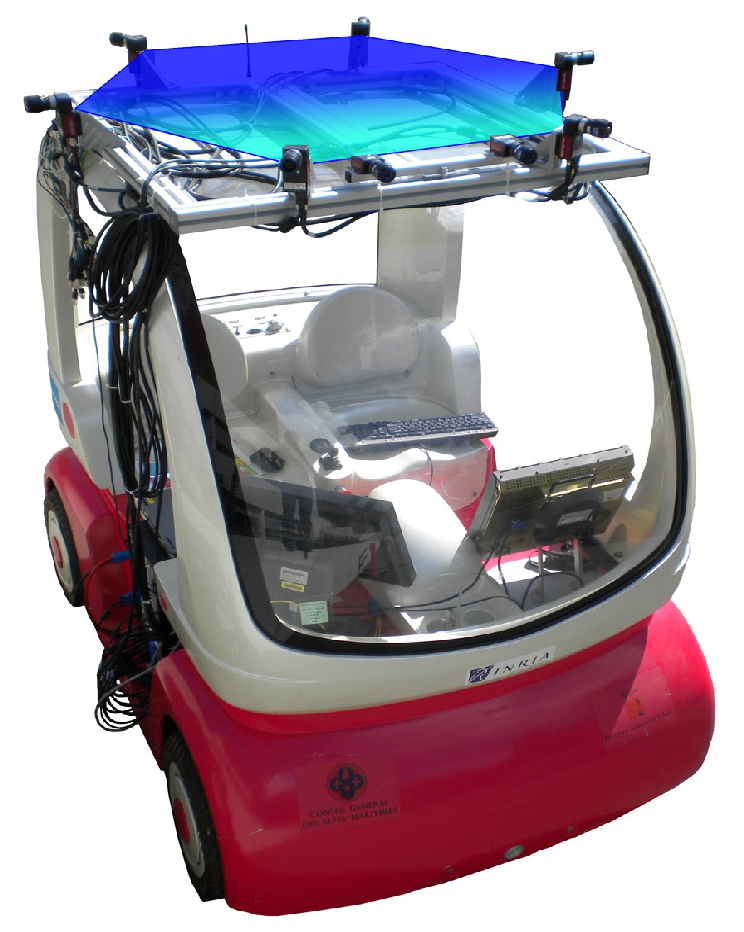Section: Software
Development work: Mobile robotics platforms
Participants : Fabien Spindler [correspondant] , Marie Babel, Patrick Rives.
Indoors mobile robots
For fast prototyping of algorithms in perception, control and autonomous navigation, the team uses Hannibal in Sophia Antipolis, a cart-like platform built by Neobotix (see Fig. 4 .a), and a Pioneer 3DX from Adept in Rennes (see Fig. 4 .b) as well as a Robotino from Festo. These platforms are equipped with various sensors needed for Slam purposes, autonomous navigation and sensor-based control.
Moreover, to validate the researches in personally assisted living topic (see 6.3.6 ), we bought in Rennes a six wheel electric wheelchair from Penny and Giles Drives Technology (see Fig. 4 .c). The control of the wheelchair is performed using a plug and play system between the joystick and the low level control of the wheelchair. Such a system let us acquire the user intention through the joystick position and control the wheelchair by applying corrections to its motion. The wheelchair has been fitted with three cameras to perform the required servoing for assisting handicaped people. Moreover, to ensure the direct security of the user, seven infrared proximity sensors have been installed all around the wheelchair.
Outdoors mobile robots
The team exploit also Cycab urban electrical cars (see Figs. 4 .d and 4 .e). Two vehicles in Sophia Antipolis and one in Rennes are instrumented with cameras and range finders to validate researches in the domain of intelligent urban vehicle. Cycabs were used as experimental testbeds in several national projects.
Note that 5 papers published by Lagadic in 2012 enclose experimental results obtained with these mobile robotics platforms.



